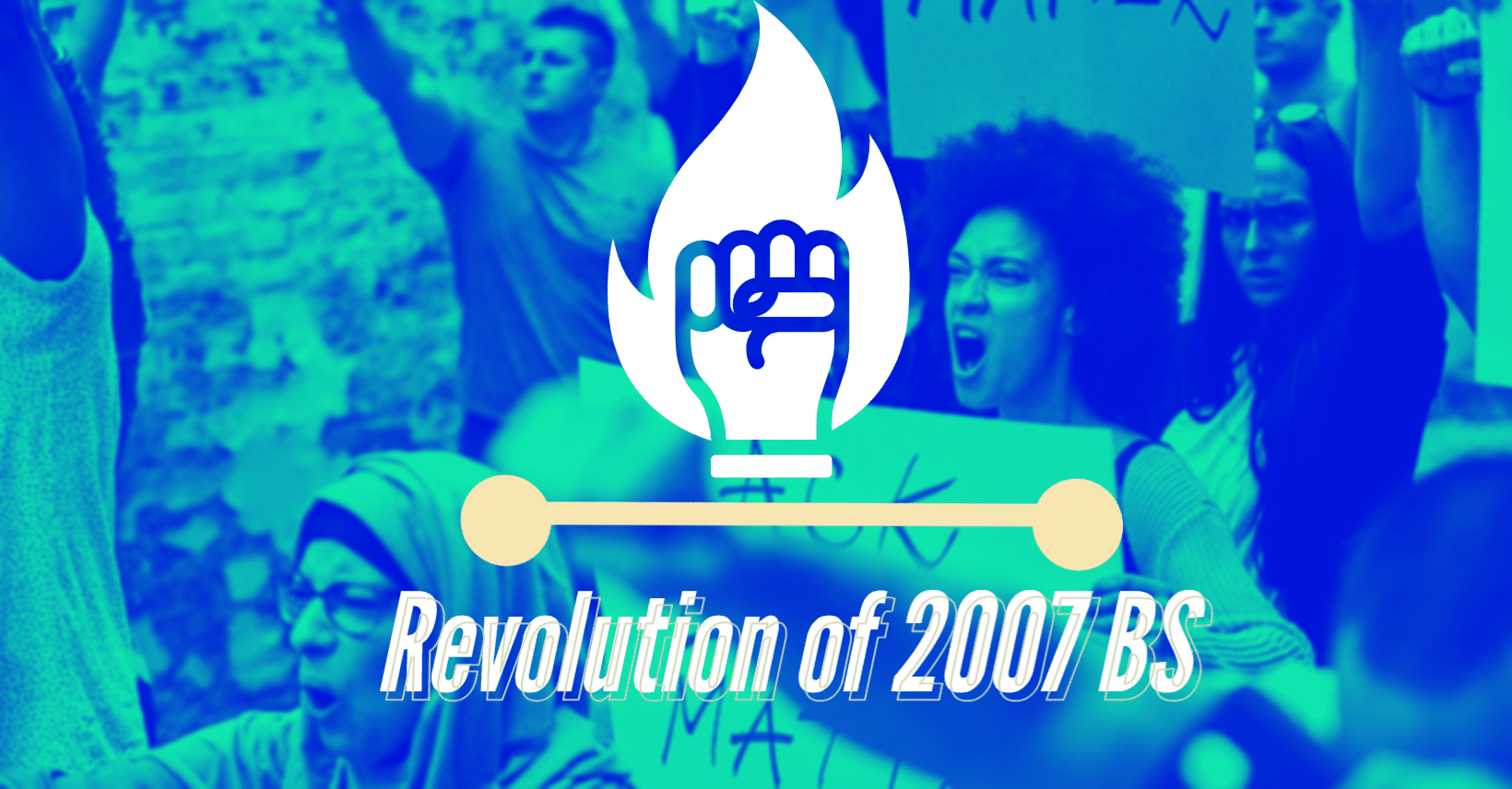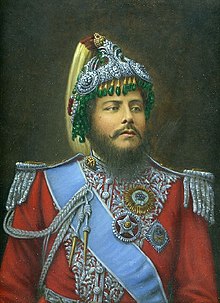Beginning Of Rana Rule
After Kto Parva in 1903 BS, Junga Bahadur Rana became the Prime Minister and commander-in-chief of Nepal. Similarly, after Aalu Parva, he made Surendra Bikram Shah the King of Nepal. He took all the state powers from King Surendra and started to rule in Nepal as a dictator. He made a new rule of succession, according to which only the Rana family could hold the post of Prime Minister. The Rana rule was cruel and despotic. They ruled in Nepal for 104 years. Nepalese people launched an armed revolution in 2007 under the leadership of the Nepali Congress and Rana’s rule came to an end.
How revolution of 2007 ended in Nepal
1. Effect of Second World War
After the end of World War II, the independence movement spread worldwide against colonial rule. Several countries of Asia and Africa got independence from British, French, and Duch rule. Many Nepalese soldiers, who participated in World War II, became politically aware. They had formed an organization called Gorkha League in Deharadun to fight against the Rana rule. When Nepali Congress formed the People’s Liberation Army, the ex-soldiers joined there and fought against the Rana rule.
2. Independence Of India
Many Nepalese students who were in India for their higher study, had participated in the Indian War of Independence. And some of them were imprisoned by the British in India along with the Indian leaders. After the independence of India in 1947 AD, all of them returned to Nepal to fight against the Rana rule.
3. Policy of Mohan Shumsher
The policy of Mohan Shumsher was also responsible for the revolution of 2007 BS. During his rule, lots of changes were taking place in the world. Dictatorial rule hand needed one after another in the world, independence movements were going on, people became politically aware but Mohan Shumsher didn’t want to change himself according to change of time. He adopted a suppressive policy and compelled the people to revolt against his rule. Due to the policy of Mohan Shumsher, Nepalese youth went to India and for4med political party and the People’s Liberation Army (Janamukti Sena) to fight against Rana Rule. Those soldiers who had participated in the second world war hand trained the Nepalese people.
4. Division in Rana Family
There was no unity among the Ranas. Chandra Shumsher had divided the Ranas into A, B, and C classes. “C” class Ranas were not included in the role of succession. So they wanted to end the Rana rule in Nepal.
Major events of the movement
When the Nepali Congress was preparing for an arm revolution against the tyrannical rule of Rana throughout the country, King Tribhuvan escaped from the palace and went to the Indian embassy along with his family members. On 21st Kartik, 2007 BS, he went to Delhi in an Indian air force helicopter. Mohan Shumsher, the then Prime Minister enthroned Gyanendra, the second grandson of Tribhuvan. He was declared the king of Nepal. But India and other countries did not recognize this act of Mohan Shumsher. At the same time, the liberation army captured the eastern hill region along with Biratnagar and Palpa.
How Rana Regime Ended in Nepal
The battle took place in various parts of the country between the People’s Liberation Army and Ranas. The people’s Liberation Army captured Illam, Diktel, Aathrai, Terhathum, Okhadhunga, Parawanipur, Bhairahawa, Kailali, Kahchanpur, Doti, Rangeli, Malangawa, Upardanggadi, Brigunj, and Parasi. Similarly, Bhojpur, Khotang,m Dhankuta, Mahotari, Mahinath, Thori, Chitwan, Taulihawa. Pokhara, Gulmi, Syanga, Baglung, Loilabas, DangDeukhuri, Pyhuthan, Dadelhura, Surkhet, Dailekh, Baitadi, Shivaraj Khajahani, Biratnagar, and Sirsiya were captured y the liberation army with minor battles or without any battles.
In 1885, the Shumsher family, the nephews of Jung Bahadur Kunwar Rana, murdered many of the sons of Jung Bahadur and took over Nepal in a military coup d’état thus bringing in the rule of the Shumsher Rana family also known as the Satra Bhai (17 brothers) Rana family. They murdered Ranodip Singh Kunwar and occupied the hereditary throne of Prime Minister. After this they added Jang Bahadur to their name, although they were descended from Jang’s younger brother Dhir Shumsher.
People started to come to the street with various slogans against the Rana regime in Kathmandu and other places of Nepal. Everywhere people started to oppose the Ranas day by day. Many people were arrested but the movement spread more effectively. Mohan Shumsher could not handle the country and requested the Indian government to arbitrate for a solution. On the arbitration of the Indian government King Tribhuvan, Ranas, and Nepali Congress started to negotiate in Delhi. Finally, a tripartite agreement was made between Ranas, King, and Nepali Congress in Delhi in 200y BS. This is called the Delhi Agreement. This agreement ended the Rana fule in Nepal. According to this agreement, an interim government could be formed where five ministers were from the Ranas and five ministers were from the Nepali Congress. After this agreement, King returned to Nepal. On 7th Falgun, 2007 BS (18th February 1951 AD) king made a declaration of the establishment of democracy and the end of Rana rule From Nepal.
Main Provisions of Delhi Agreement
The election of the Constituent Assembly will be held to draft a new constitution.
- A ten-member cabinet will be formed where five ministers will be from the Ranas and five from Nepali Congress to run the daily administration until a new constitution is made.
- King Tribhuvan will be the legitimate king of Nepal.
- General amnesty to all political prisoners.
- Agitators had to hand over their weapons to the government and stop the movement.
After this agreement, the Nepali congress agrees to stop the movement. But Dr. K.I Singh, one of the commanders of the People’s Liberation Army on the western front disagreed with the Delhi Agreement and denied handing over the weapons because many people had sacrificed their lives to end the Rana rule but after the Delhi Agreement again Mohan Shumsher became the Prime Minister of Nepal. Dr. K.I Singh wanted to continue the revolution but his movement was suppressed.
Consequences of Revolution
The revolution of 2007 BS was a great achievement in the history of Nepal. The regime established by Junga Bahadur after Kto Parva came to an end by this revolution. The major consequences of this revolution are as follows:
- End of the Rana rule and establishment of democracy in Nepal for the first time
- People got rights and freedom,
- King restored his royal power,
- Interim constitution and interim government were formed,
- Development work started to take place in Nepal.

